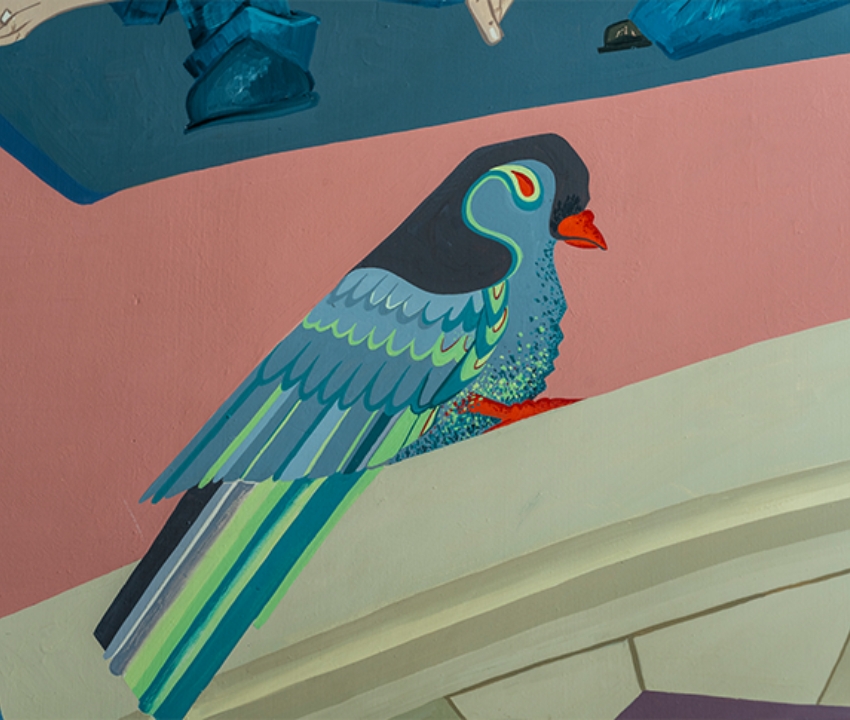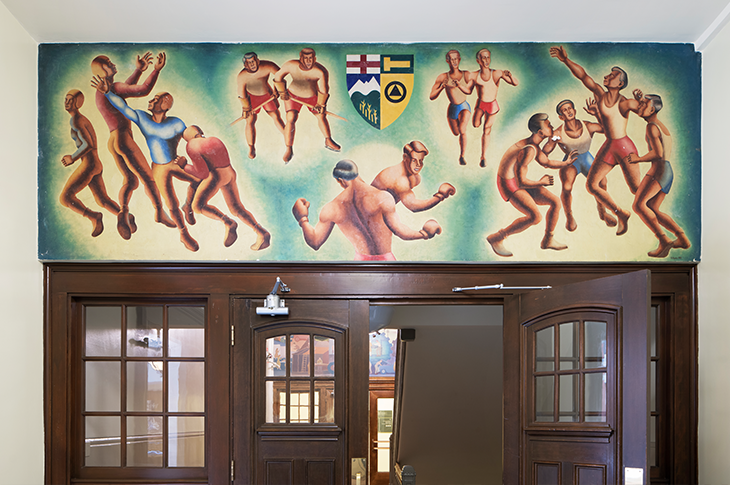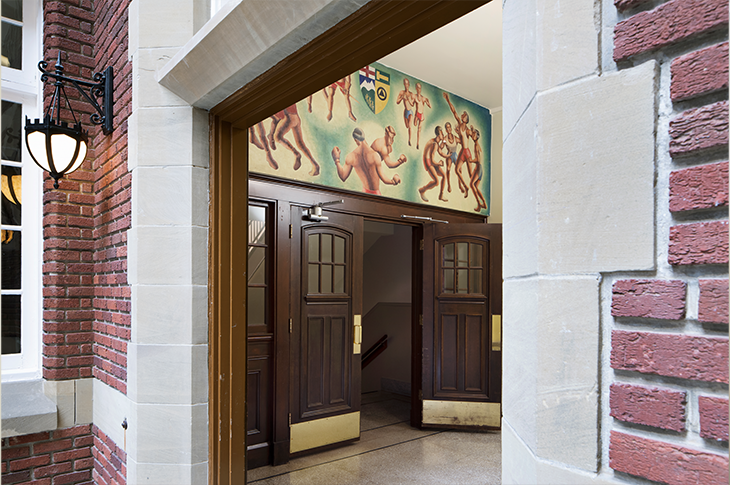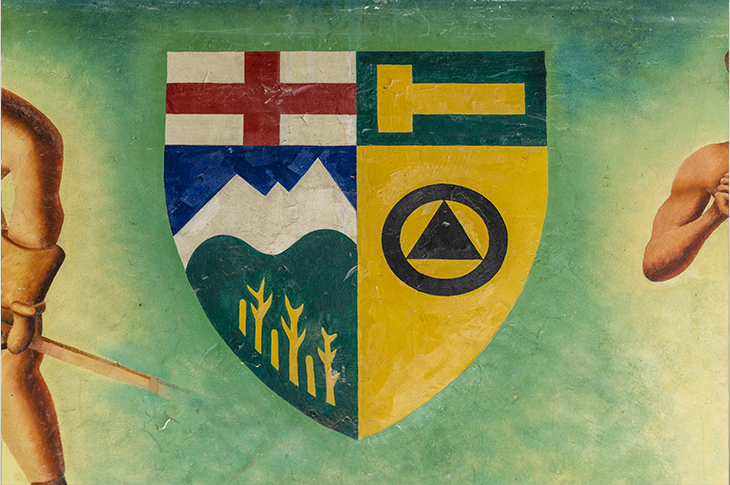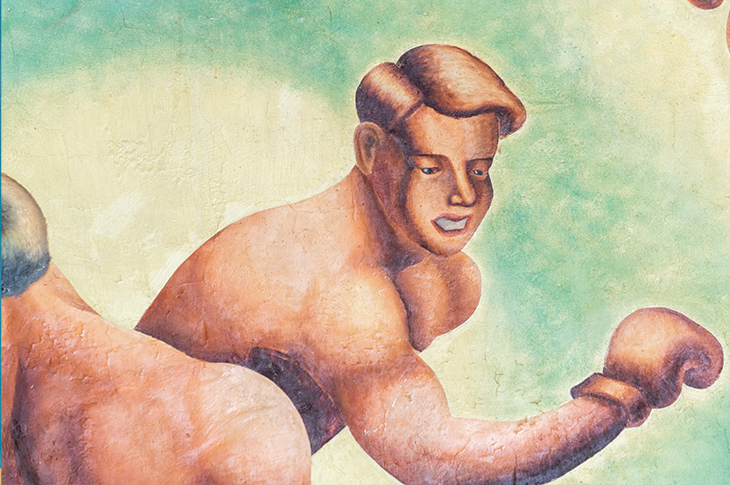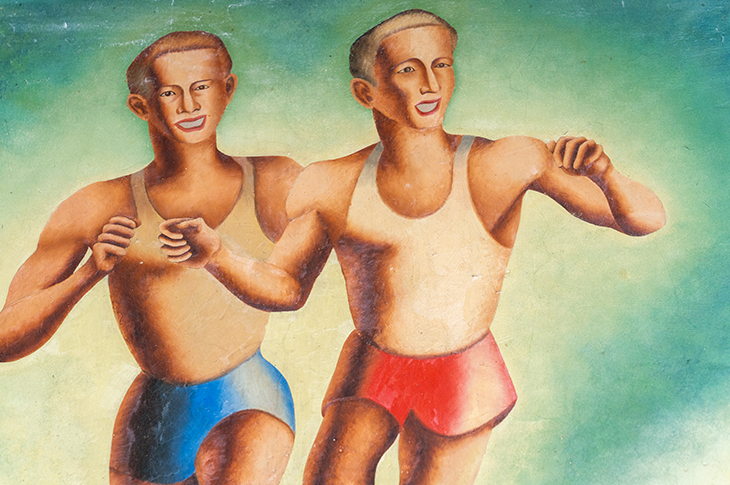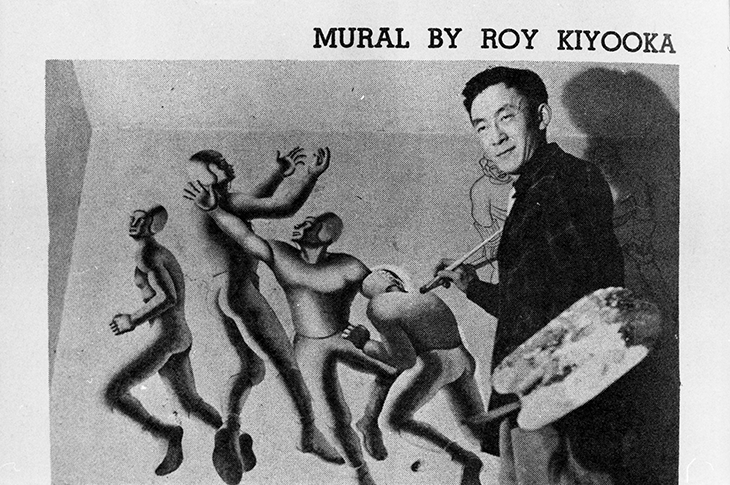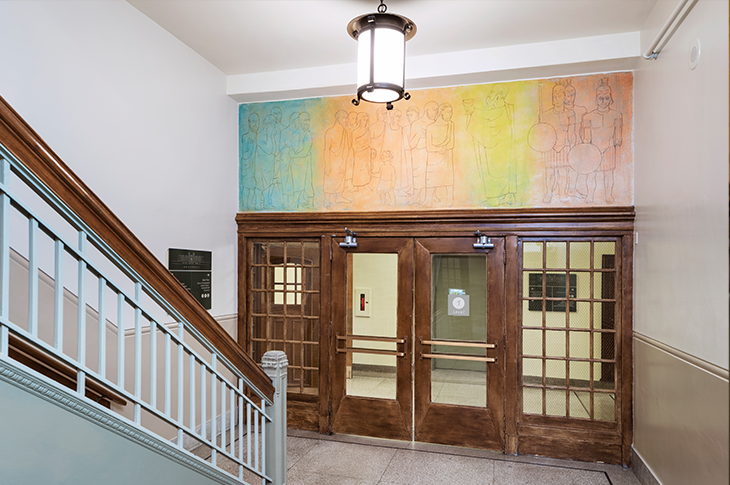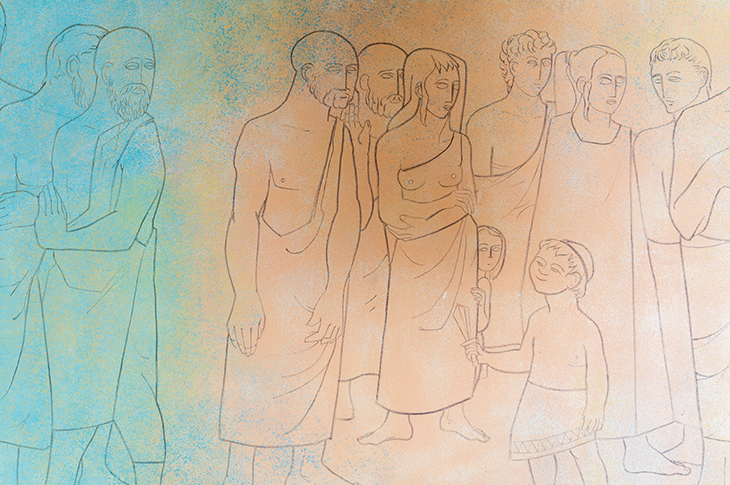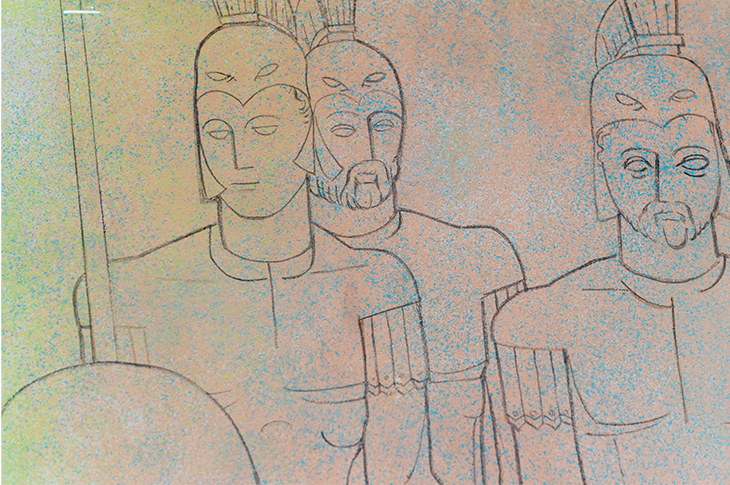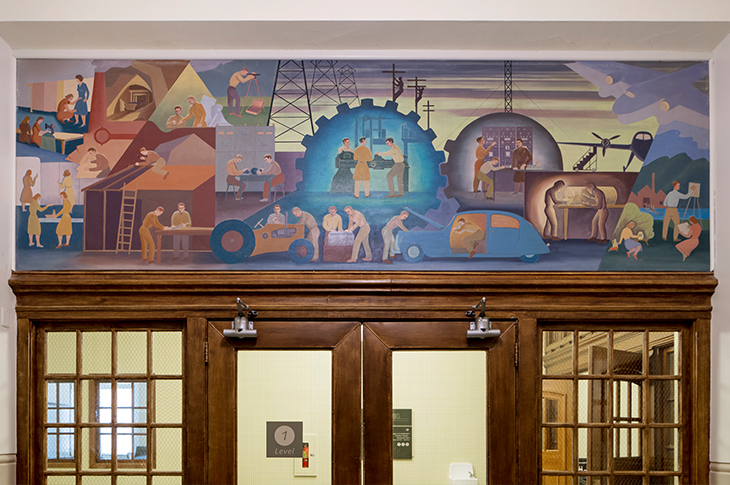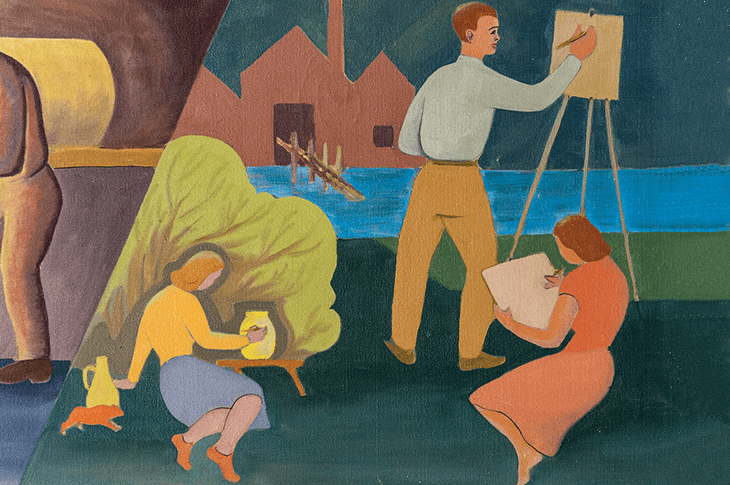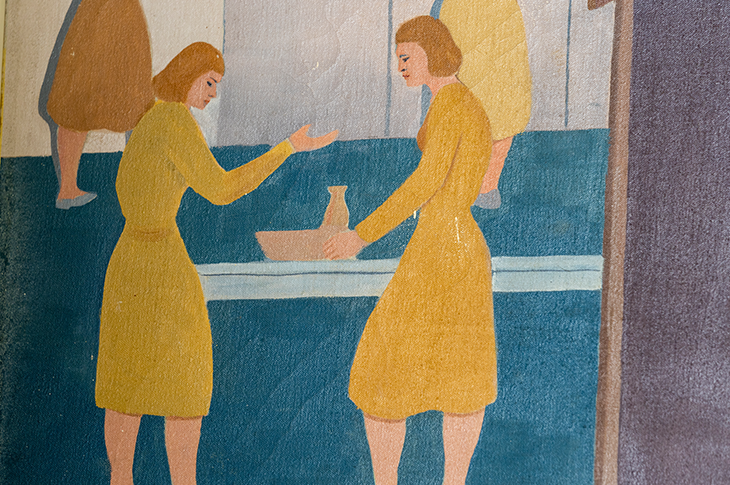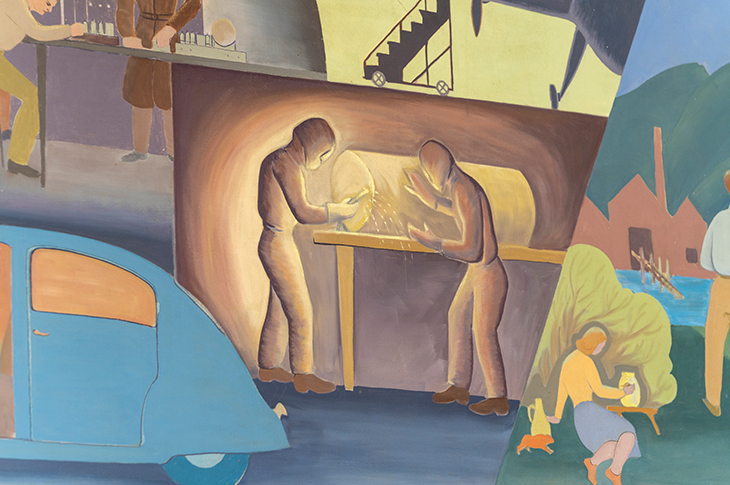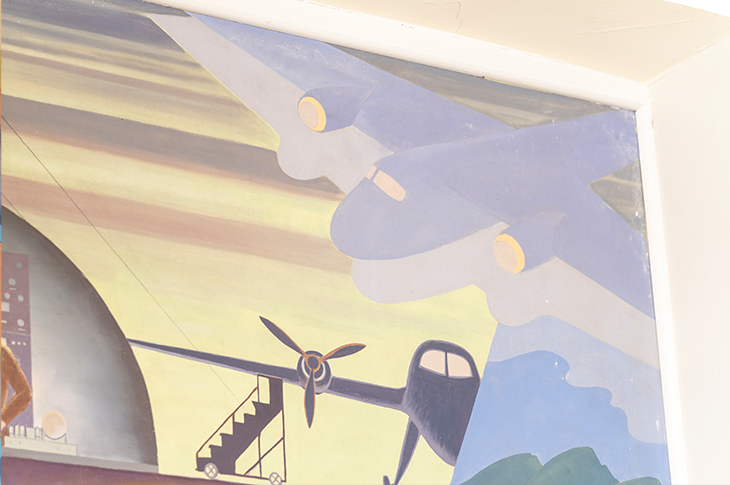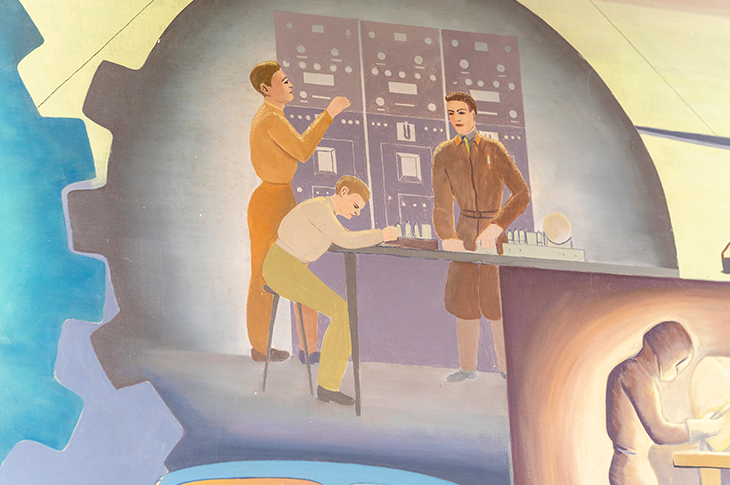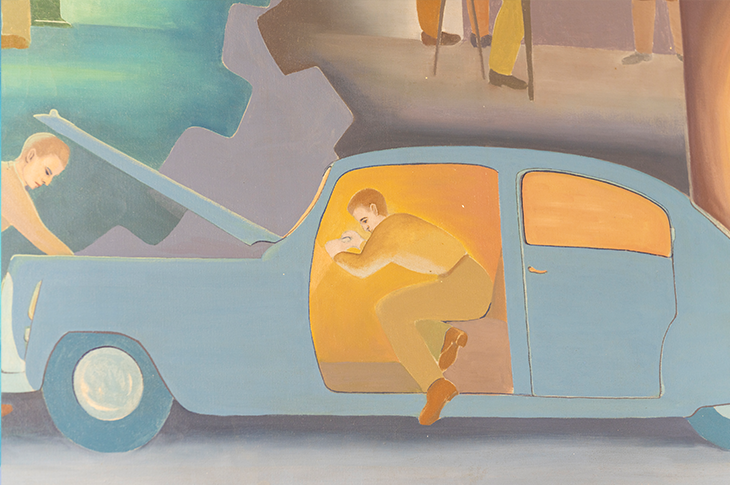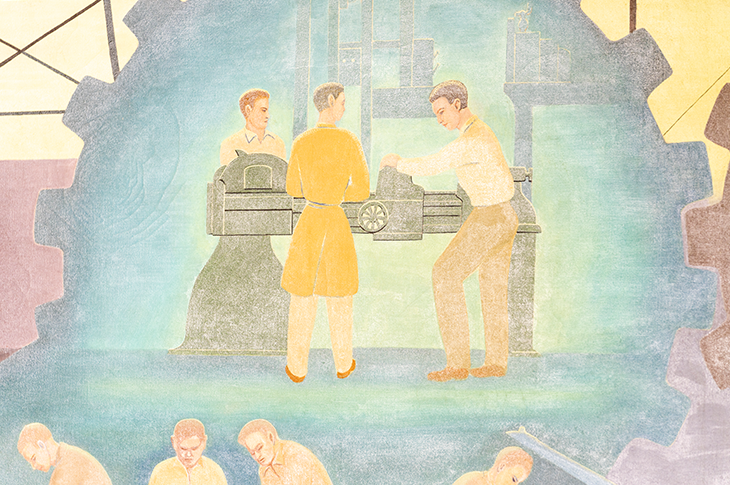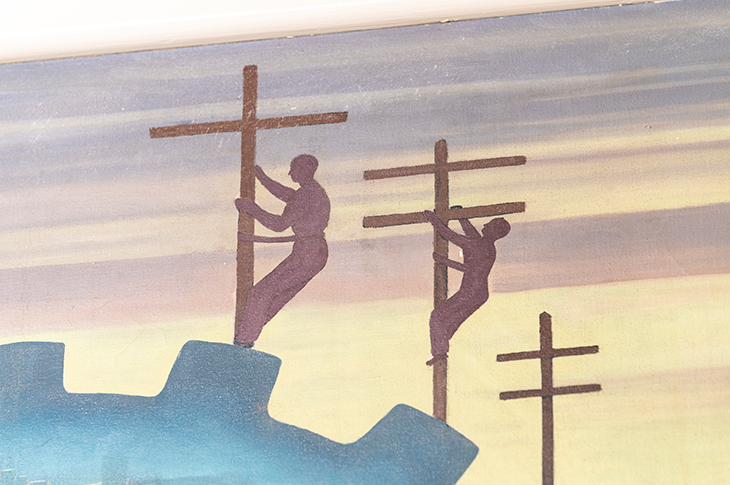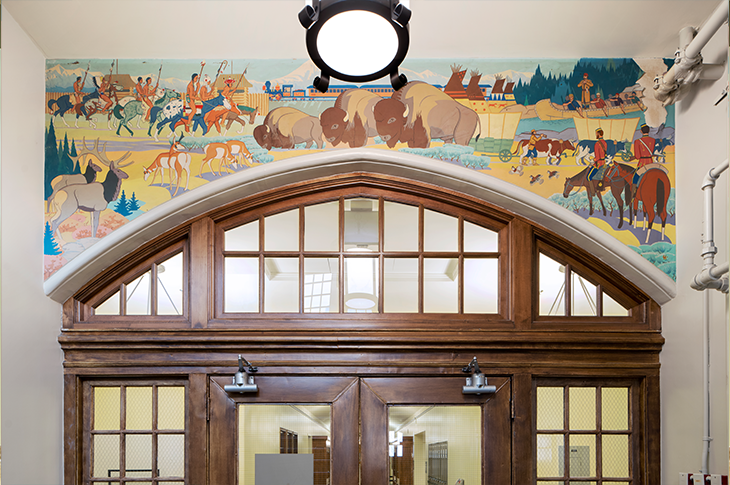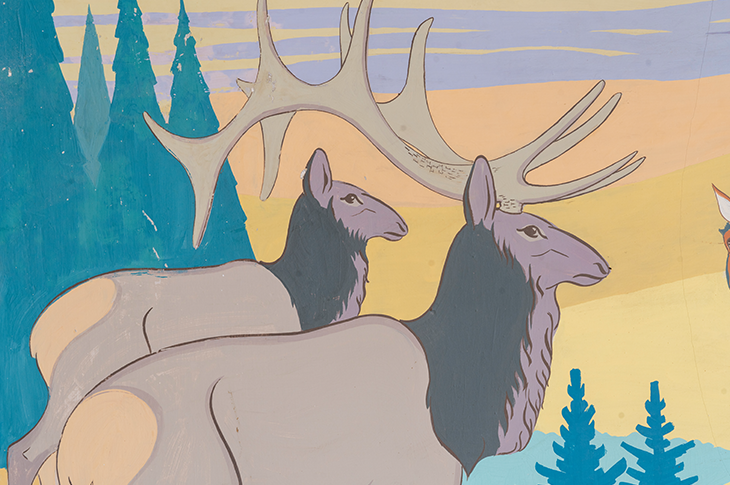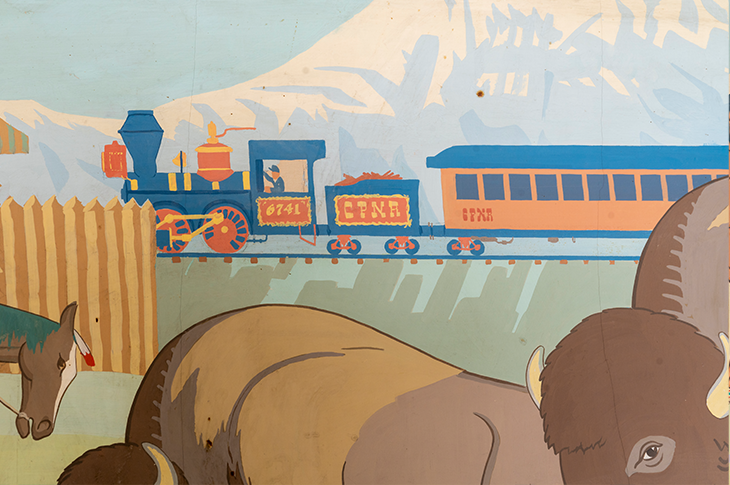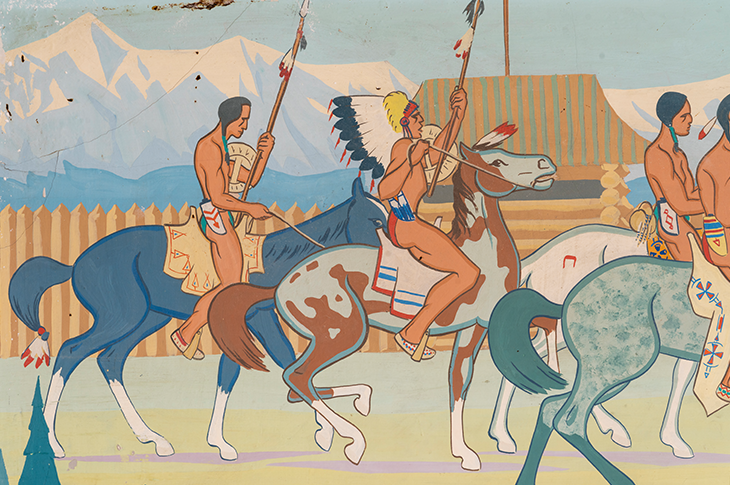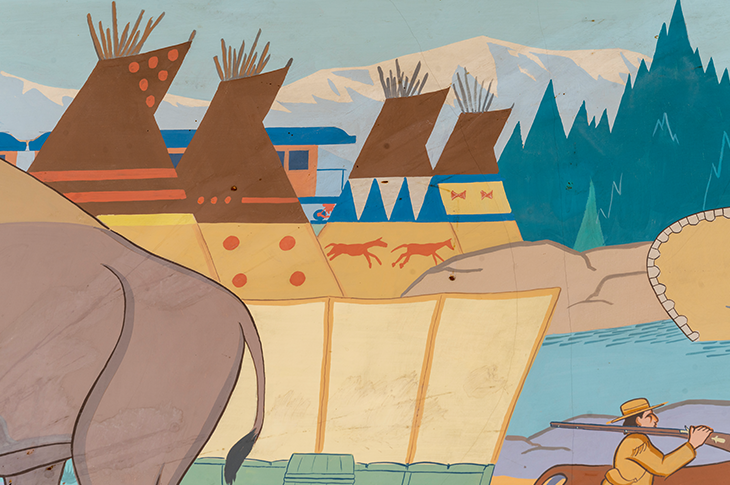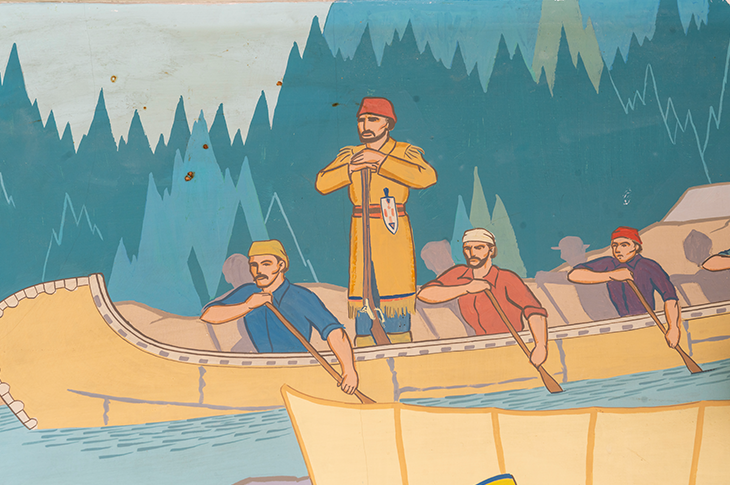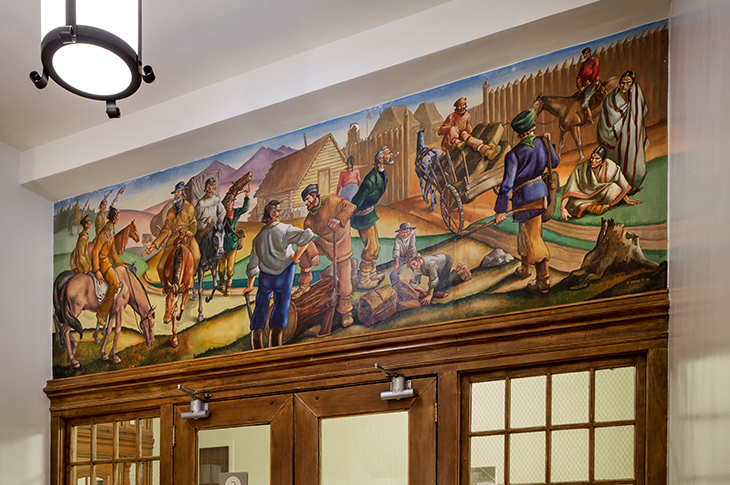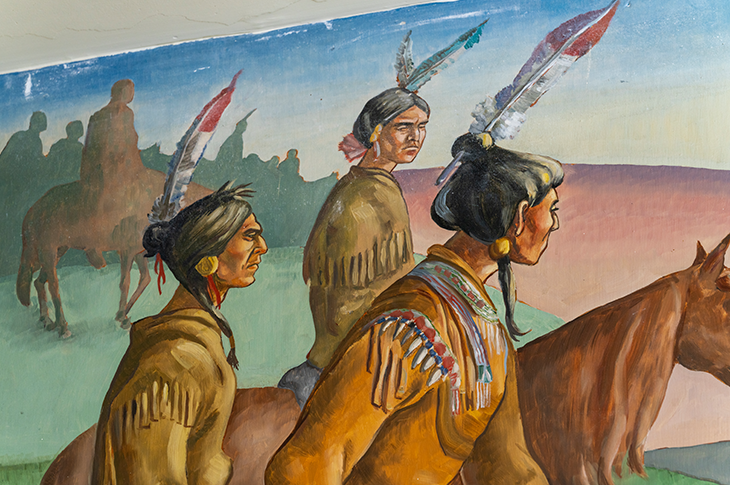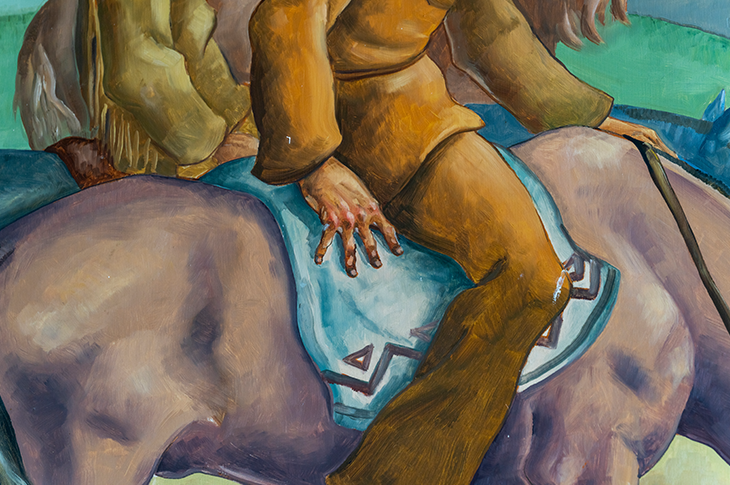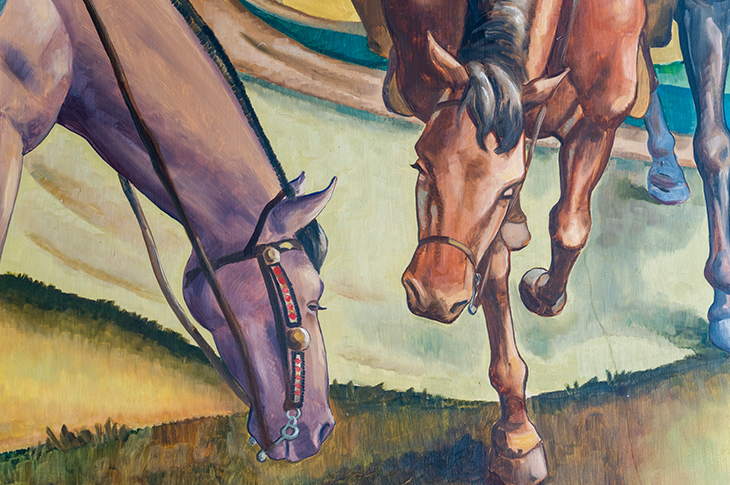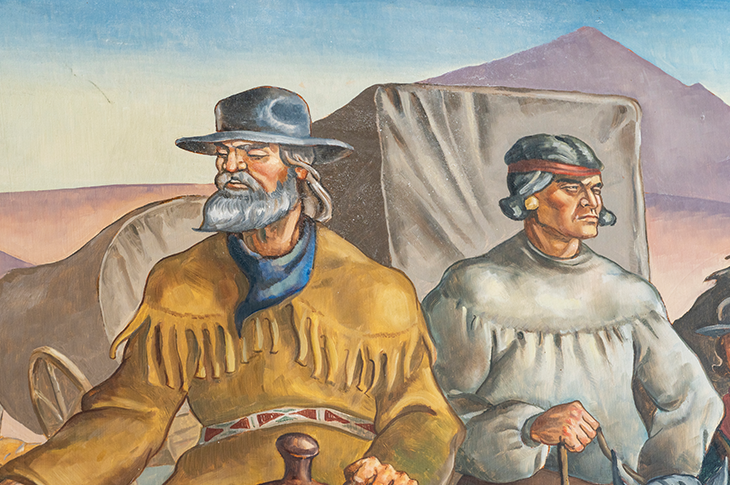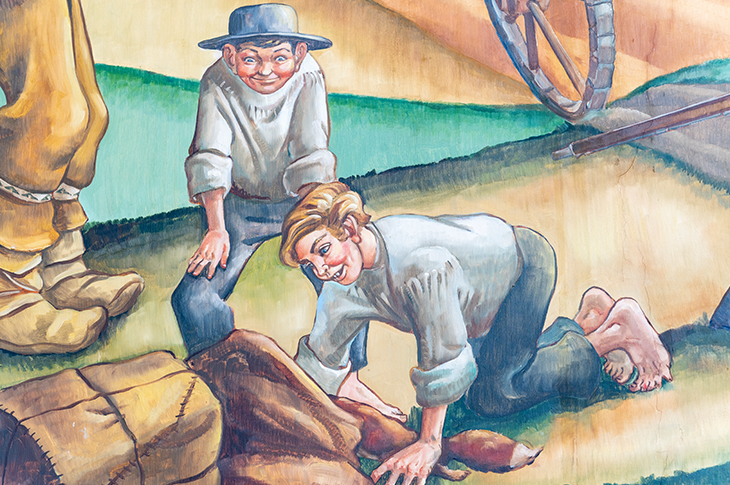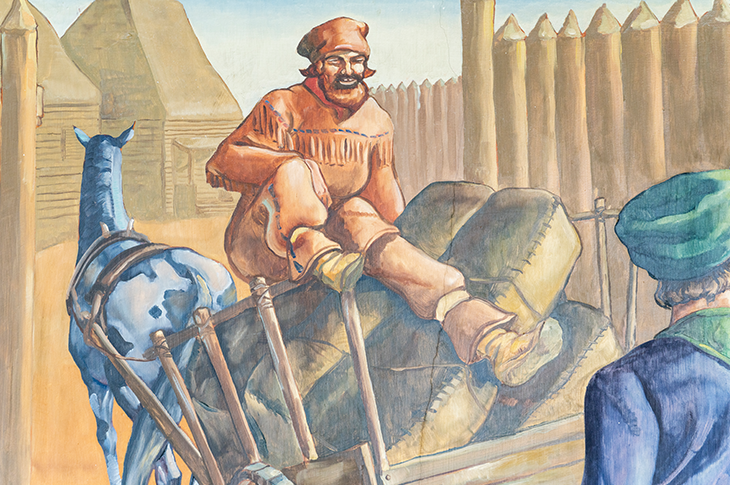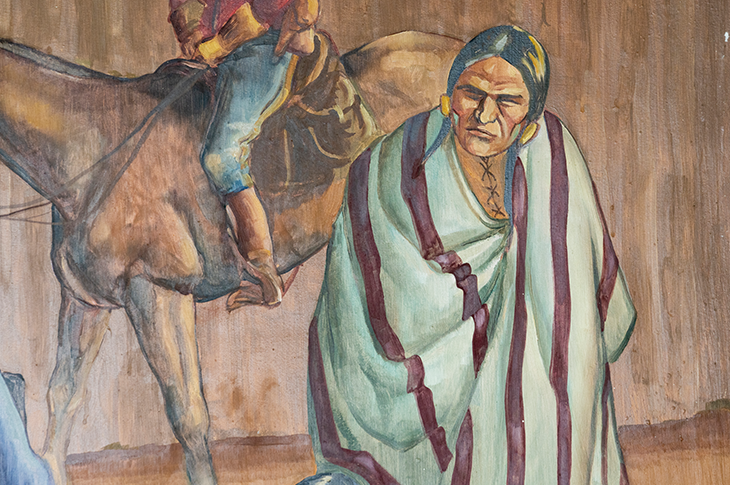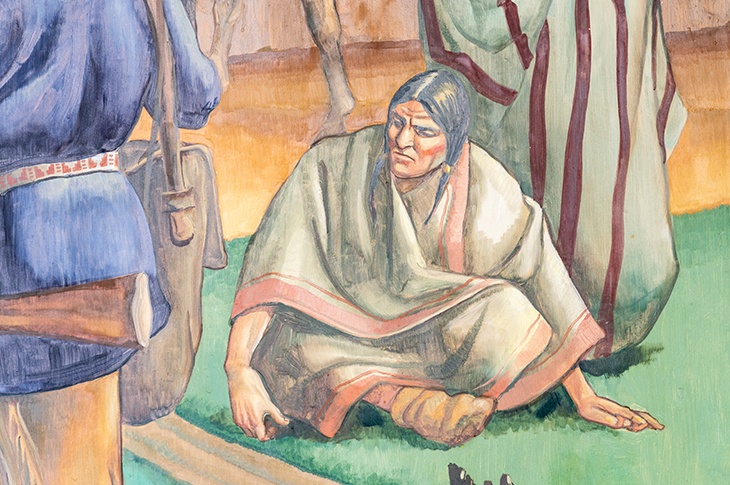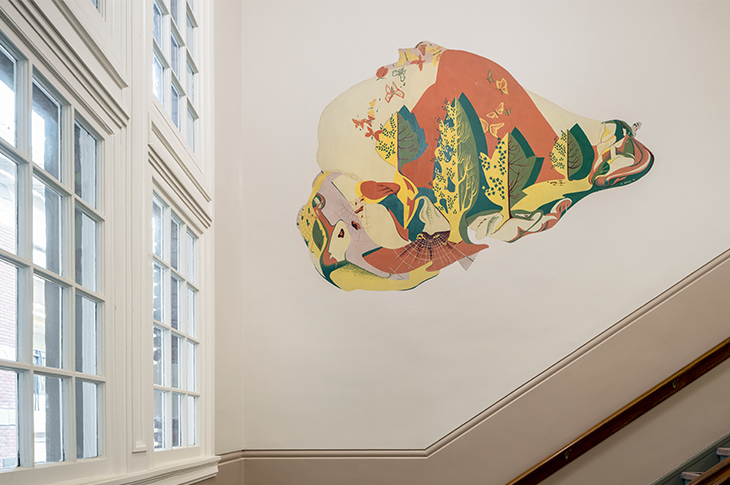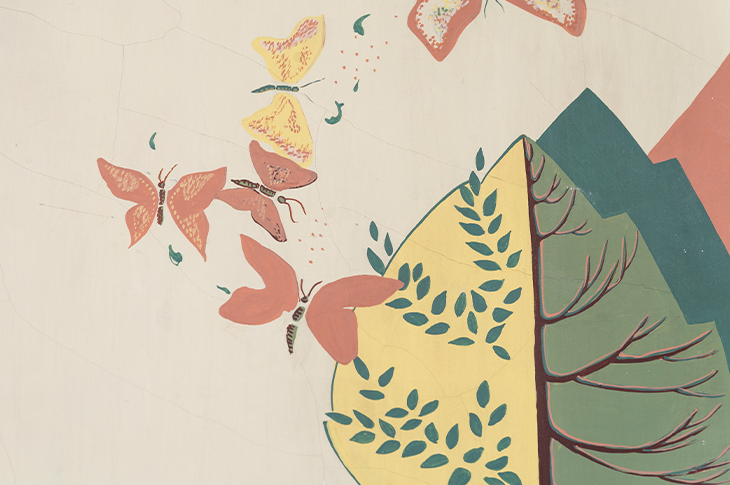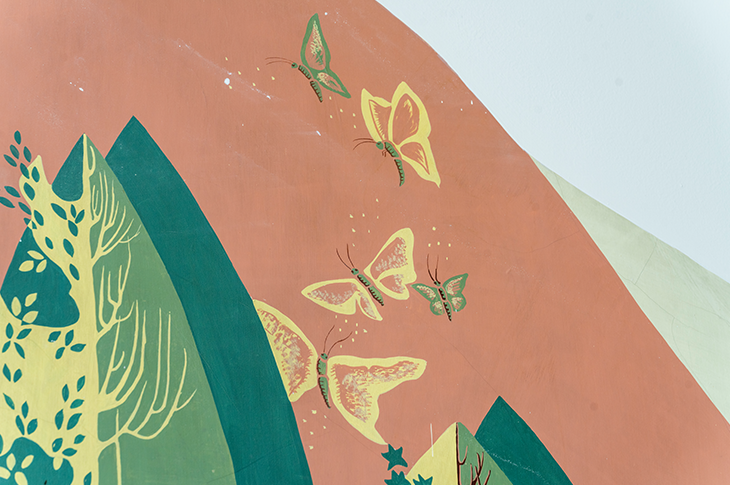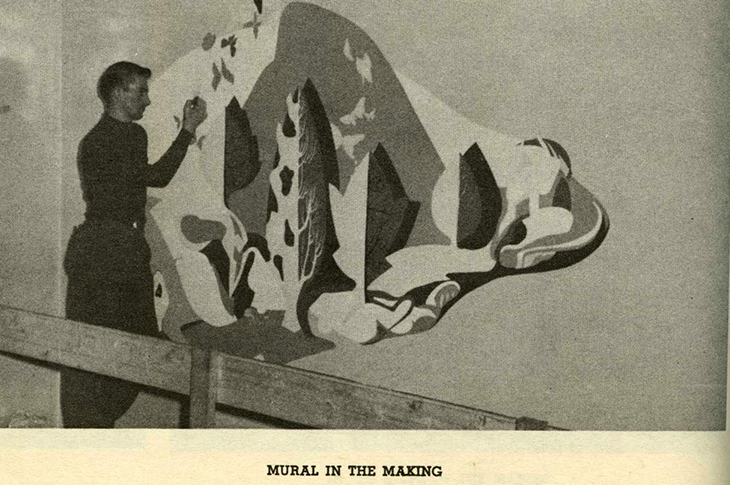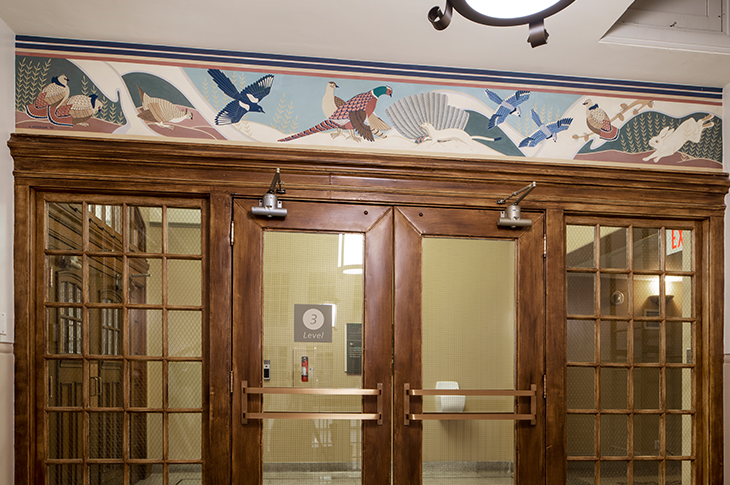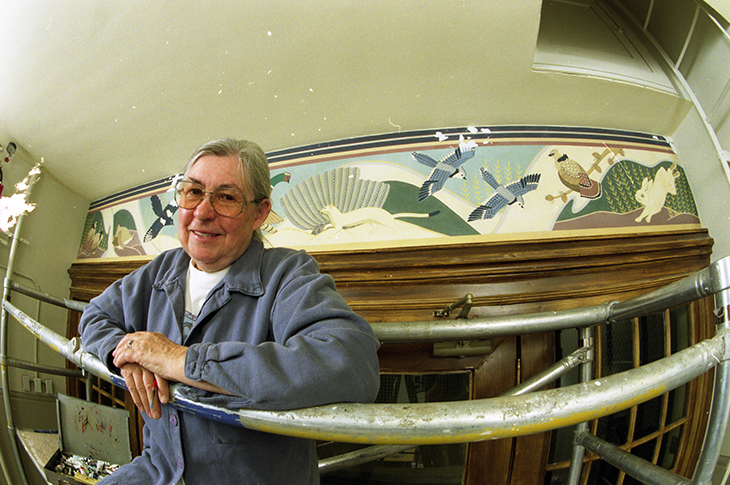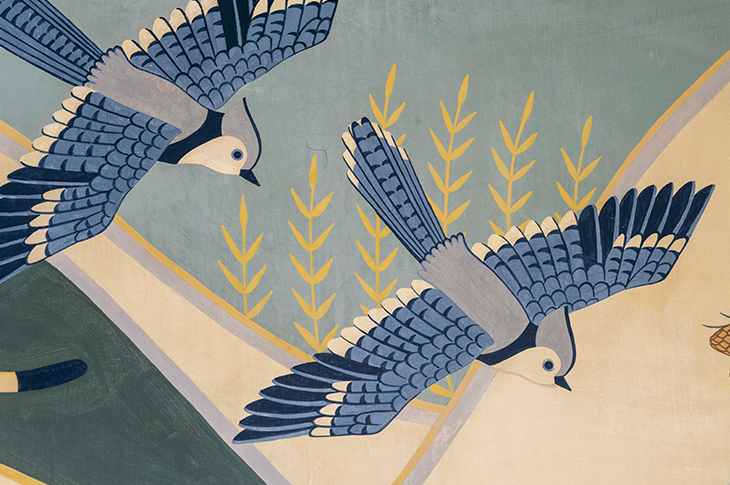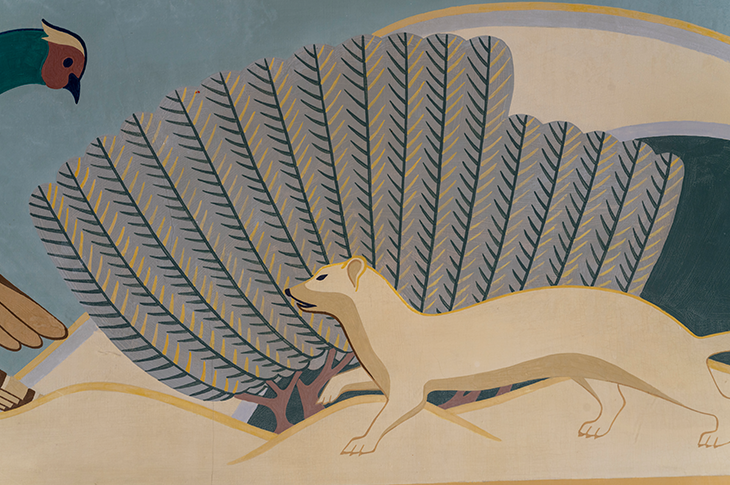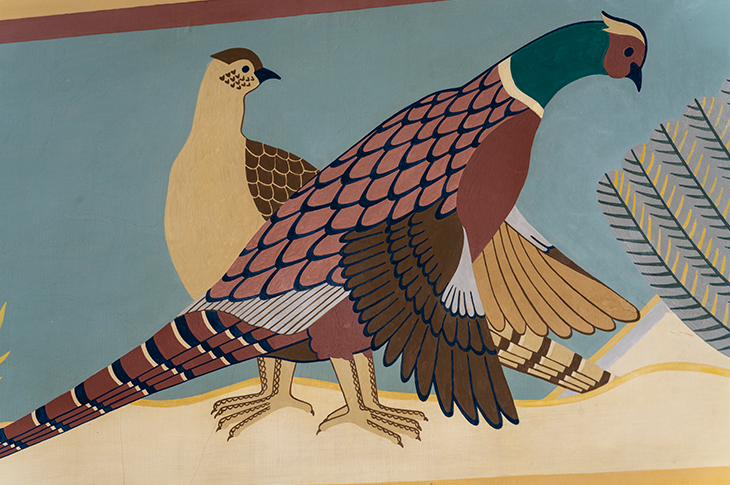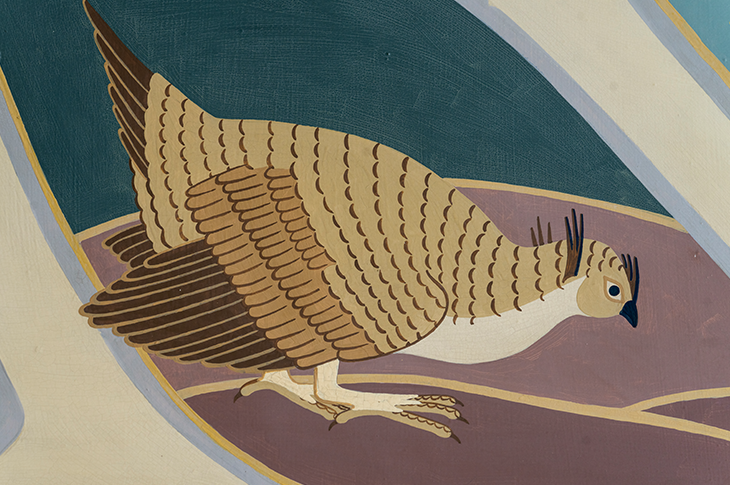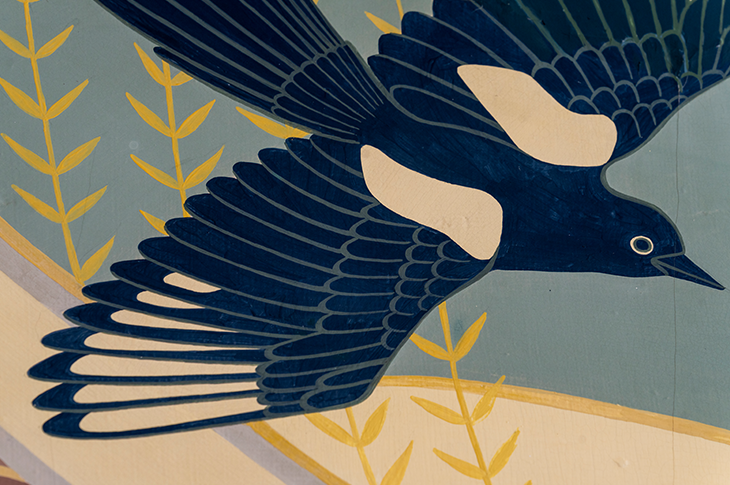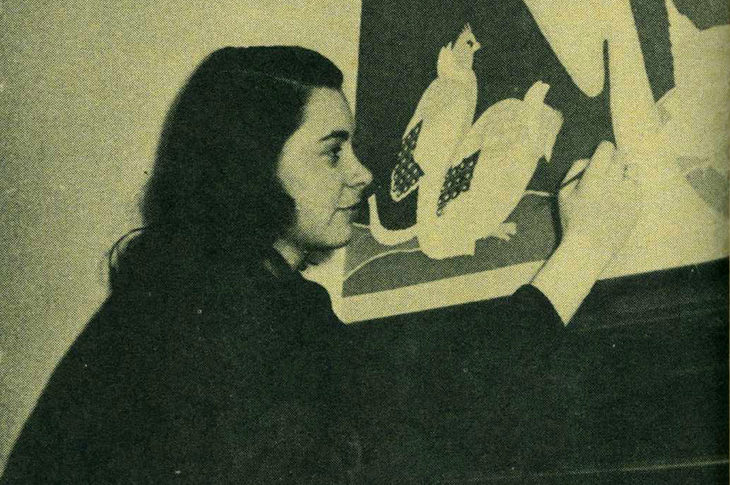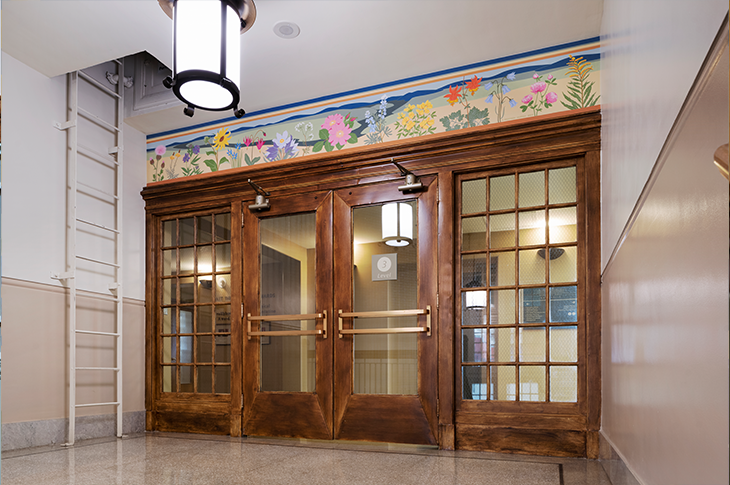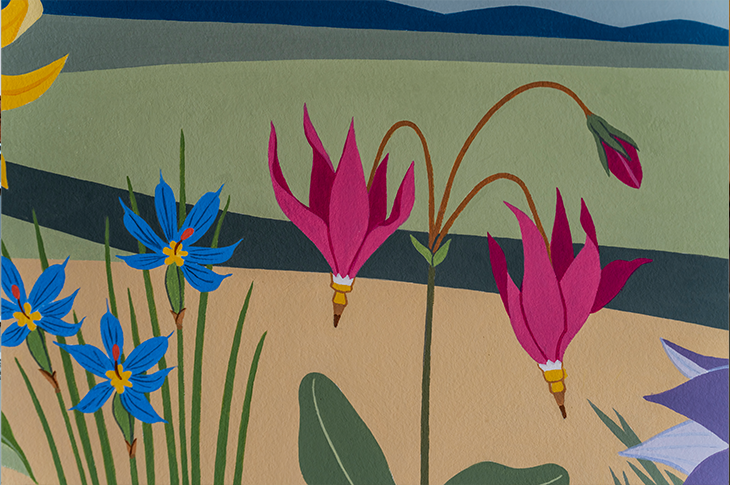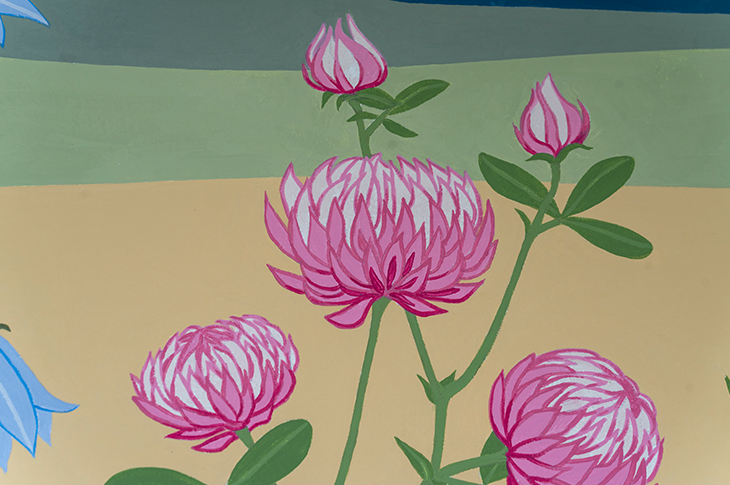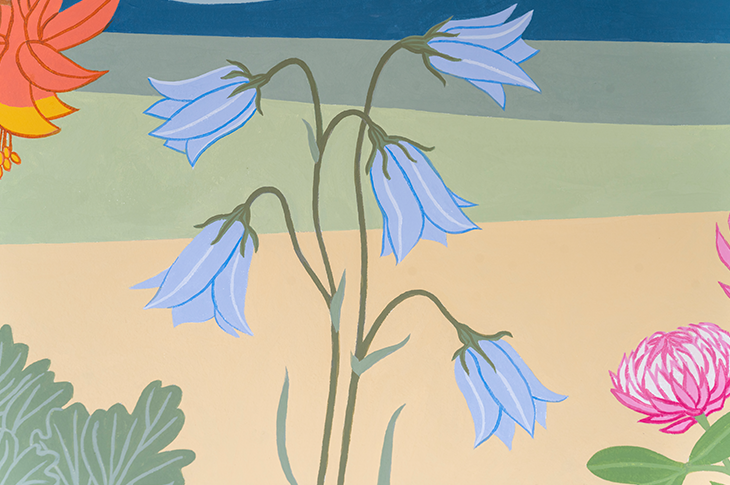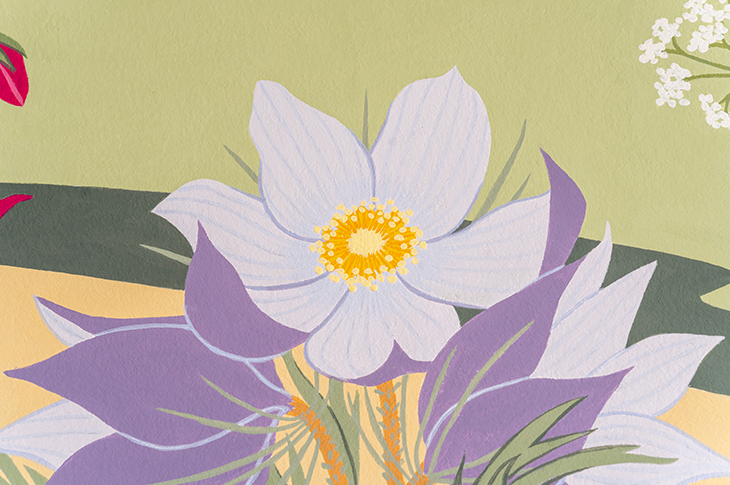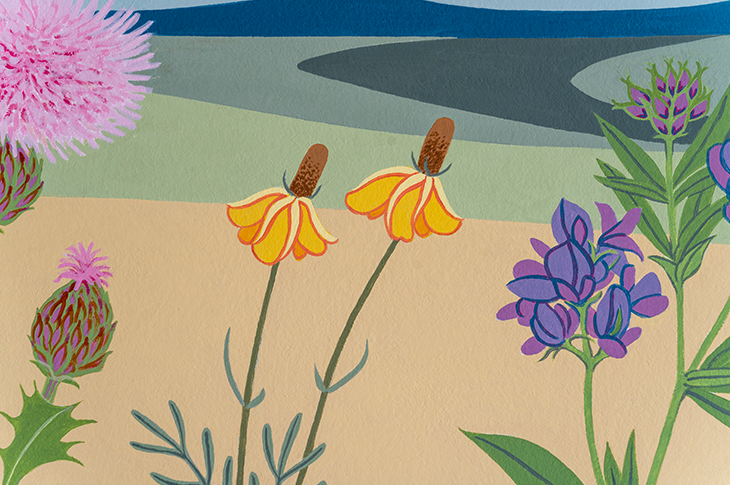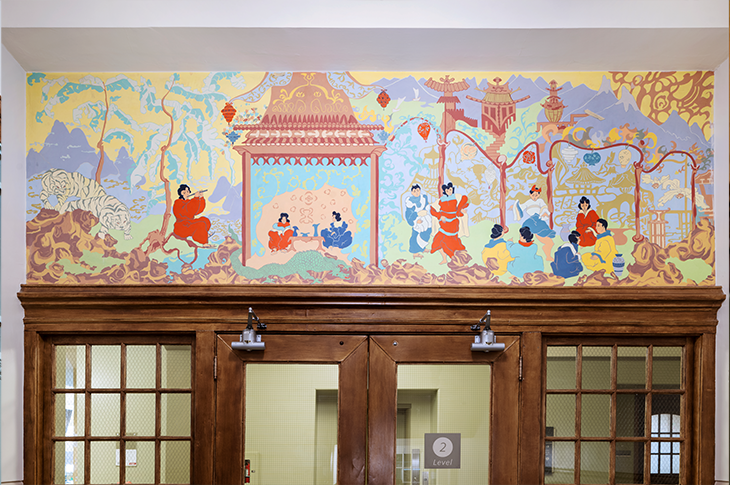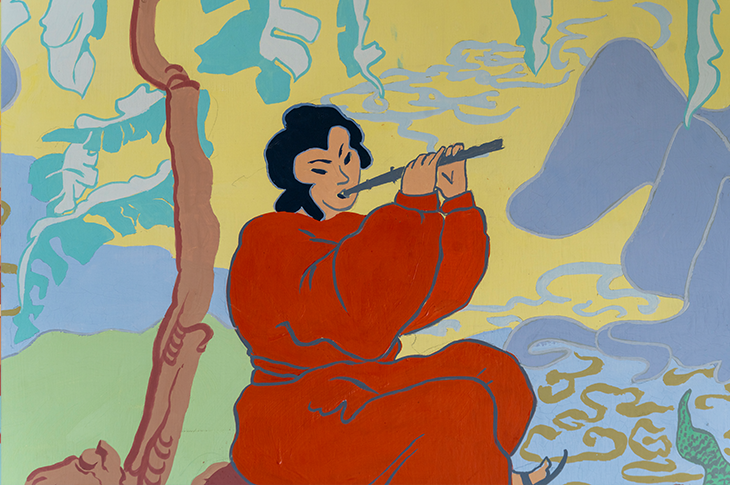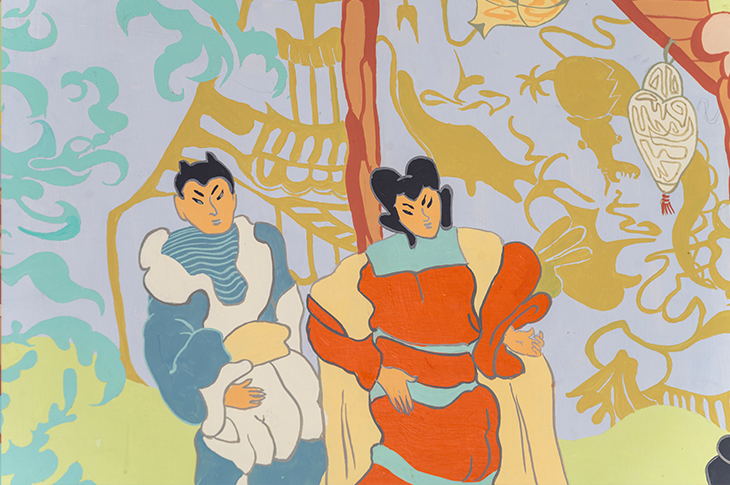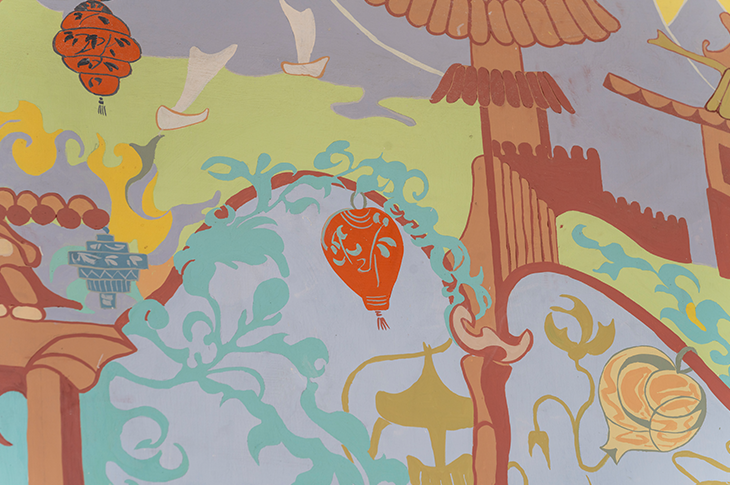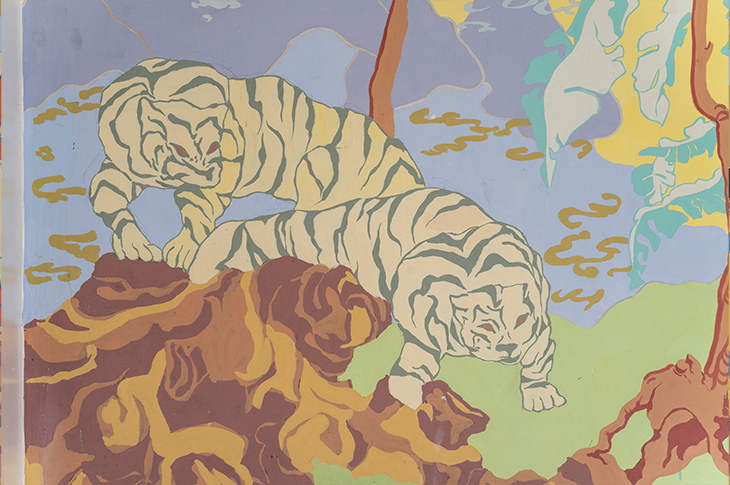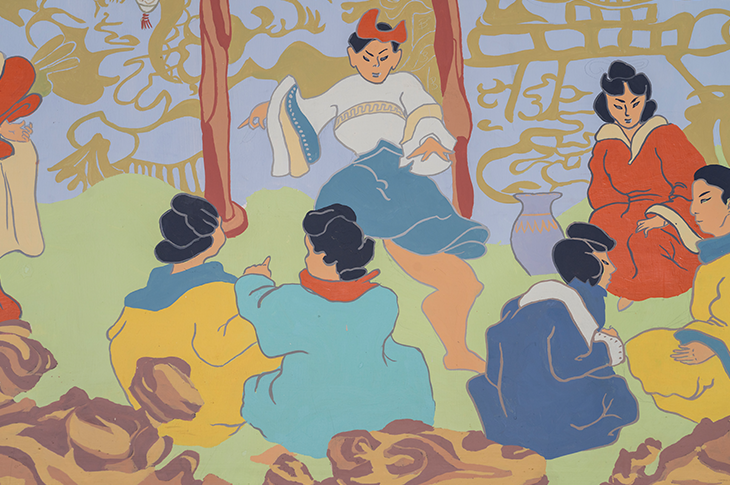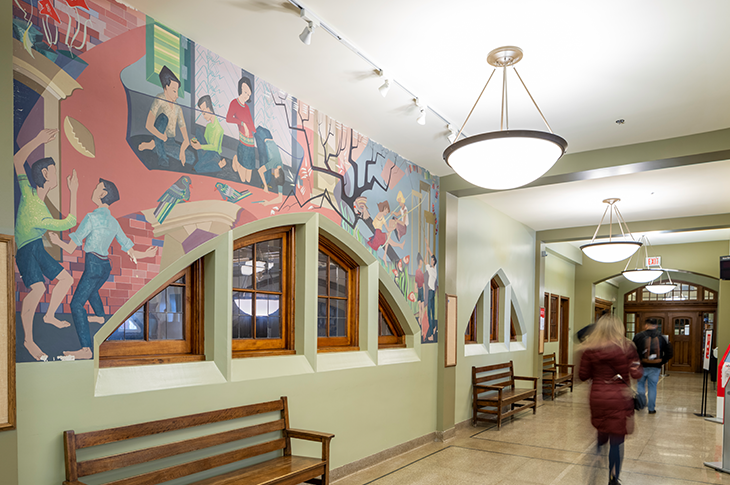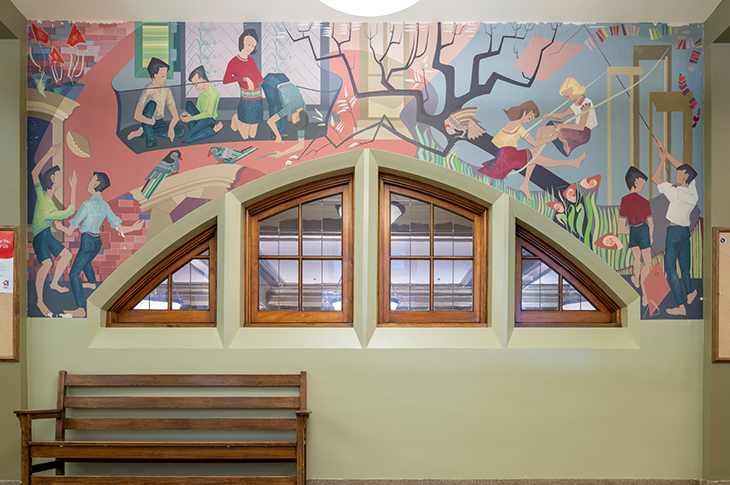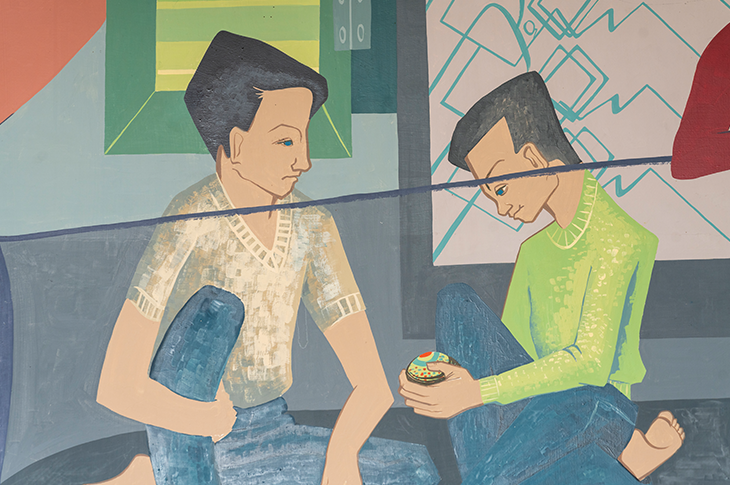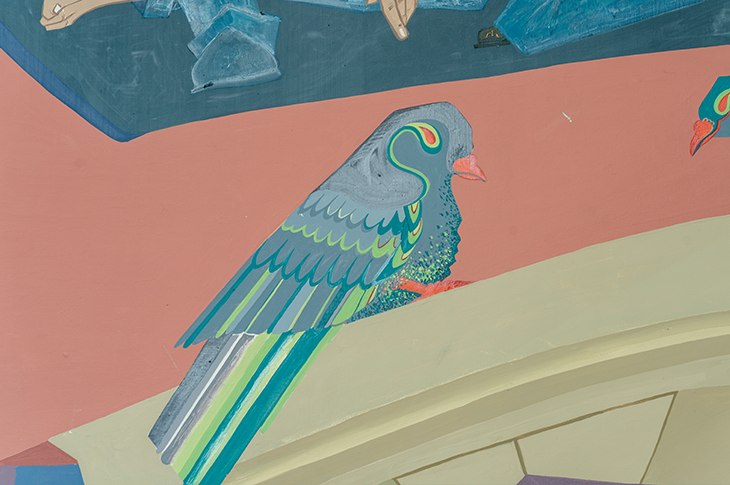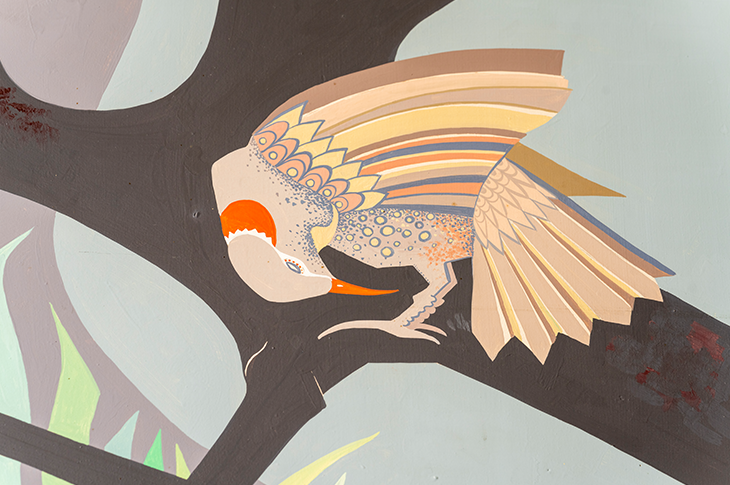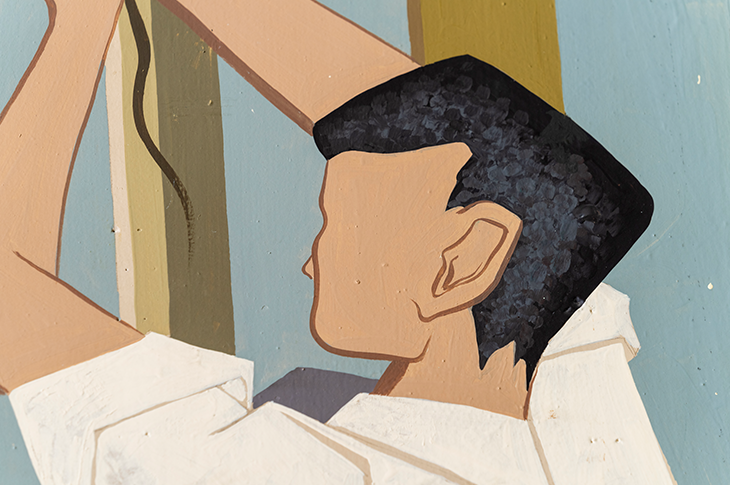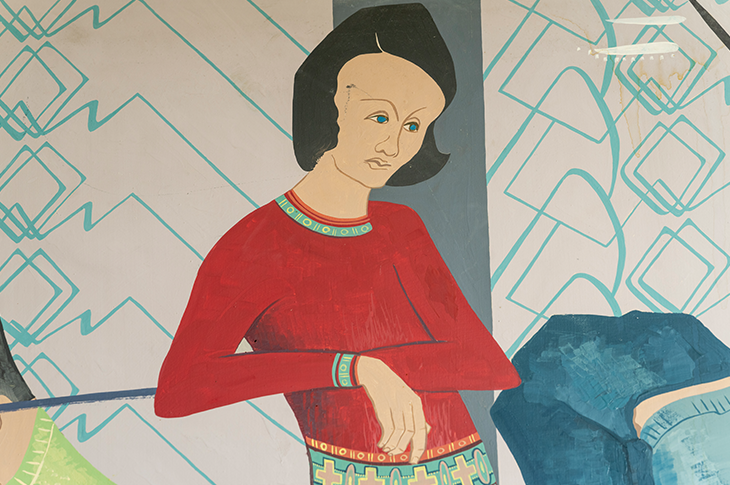These be stirring times — the walls are coming to life!
With these words in the 1948/49 yearbook, Illingworth (Buck) Kerr — Head of the Art Department at the Provincial Institute of Technology and Art (PITA), as SAIT was originally called — described the launch of an ambitious art project to "liven our walls with color."
Between 1949 and 1955, twelve murals were painted by students in stairways and corridors throughout what was then called the Main Building. “The day-to-day progress of these pioneers is of constant interest to fellow students,” wrote Kerr. Today, Heritage Hall’s murals are both a testament to the importance of the Art Department in Calgary’s arts community and a gallery showcasing artists at the start of their careers. LINK talks with Calgary art historian Lisa Christensen about the murals and their meaning.
Beginning with a blank canvas — or wall
"In many ways, Calgary’s art world began in the halls of Tech and in the classes that were run there,” Christensen says. “Illingworth Kerr was one in a line of very important Canadian artists who served as head of the Art Department, beginning with Lars Haukaness in 1926 and followed by A. C. Leighton, H.G. Glyde, Jock Macdonald, Stanford Perrott and Ken Sturdy. They were all sought out to head a very prestigious program and each had solid training and an established career of their own. They were expected not only to teach but to drive the program. And to be an example in the community of what being an accomplished artist was all about."
And, Christensen says, murals like this one painted by Ted Browning [see gallery below] interest her because of their post-Second World War optimism. "They share a broad world view about art, creativity and industry, like this mural focusing on what students were learning in PITA programs."
“Other murals focus on classical themes. They talk about history and they look very much towards the future and many of the things Canadians fought for in the war: freedom of expression, personal growth and the ability to live your own life. The Art Department had always been about doing those things."
[A] survey of space was made and panels on the stairways were given first choice. Fitting subjects were discussed in class — Alberta’s history, natural resources, industries and agricultural background; the Institute’s activities, educational, cultural, athletic — and in due course all these themes will be created.
“Great art begets great art, and we have some amazing artists in Calgary. It’s not something we brag about,” Christensen says. “But having these murals intact in Heritage Hall is an amazing thing because they do the bragging for us. You don’t need someone like me to stand up and say, ‘This is great.’ Because the murals do that. This was a rich, rich time in Calgary art, and PITA had students who went on to become really big players, like Ron Spickett.”
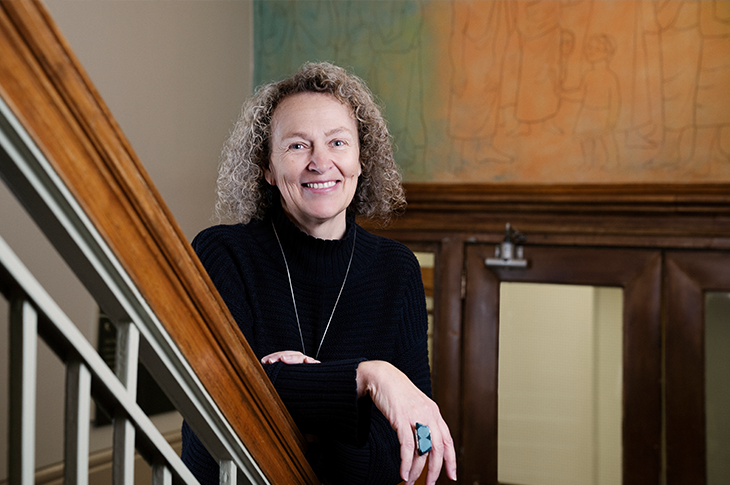
When will it be done?
Christensen muses that the first reaction to Ted Godwin's mural [shown in this gallery] might be that "perhaps it's not finished — that it's a preparatory sketch because it’s so soft compared to the others." But, she says, it relates directly to the series of tartan works Godwin would later execute.
“In a way, this mural foreshadows the important series of works that really made him famous."
“This was the last mural painted in Heritage Hall, and it’s easy to walk by it. But if you look at the Spickett mural, which was one of the first painted, and this one, you’re looking at two artists who now are of such stature. These works are from the very beginning of their careers, but you can see glimmers of what is to come. Spickett became famous for his horse and rider paintings; Godwin became known for his colours and brushwork. And I think that's a really nice bookend around the whole mural project.”
More of the murals
Take in the vibrancy of the murals as you flip through the photo gallery. You'll see a full version, close up shots of details and photos of some of the artists from long ago.
If you want to learn more, be sure to listen to "Masters of murals: Establishing Calgary's art scene," which is Episode 5 of the award-winning audio series of If These Halls Could Talk. Hear Lisa Christensen discuss the murals plus personal memories from Canadian sculptor Katie Ohe (Art '58) and the lifelong impact studying at PITA has had on her art.

Oki, Âba wathtech, Danit'ada, Tawnshi, Hello.
SAIT is located on the traditional territories of the Niitsitapi (Blackfoot) and the people of Treaty 7 which includes the Siksika, the Piikani, the Kainai, the Tsuut’ina and the Îyârhe Nakoda of Bearspaw, Chiniki and Goodstoney.
We are situated in an area the Blackfoot tribes traditionally called Moh’kinsstis, where the Bow River meets the Elbow River. We now call it the city of Calgary, which is also home to the Métis Nation of Alberta.
